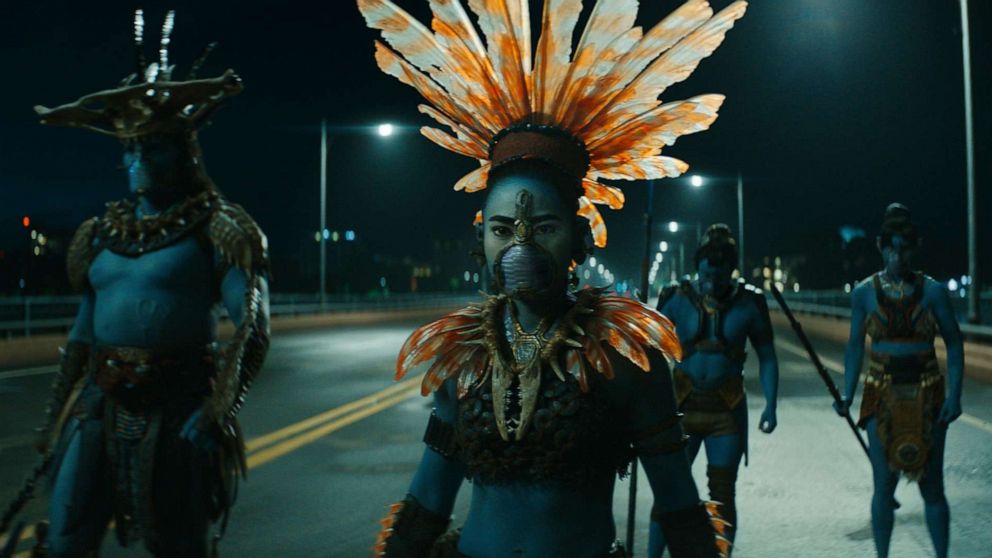Like the original Black Panther, Wakanda Forever roots its central dilemma in what vibranium is for. Like previous antagonist Erik Killmonger, Namor uses contemporary events to make his point that the oppressors of the world can be overturned by Wakanda’s superior technology, and by not acting, the supposed good guys are allowing the oppression. In Namor’s case, this applies to the Meso-American nations conquered by the Spanish in the 1600’s, which he witnessed as a child. Under the sea, he’s built an empire in their image, full of the iconography and costuming of the Aztecs and the Maya (oppressors in their times but whatever). Namor has a plan and a purpose for his vibranium, while Wakanda is still stuck on the status quo. T’Challa revealed his nation to the world at the end of Black Panther, and in the intervening years, little seems to have changed. The film makes Wakanda reactive to the actions of other nations, a mischaracterization of how they would operate in a world that’s behind them by several rungs on the ladder.
This inertia extends to the characters who were so dynamic in the original. Tech-wiz Shuri is the lead character by default, and her arc is about coming to terms with her grief and a perceived inability to save her brother. Secret MVP of the first film Nakia (Lupita Nyong’o) is in the same dreary headspace, though her innate charisma can only brighten the film when she’s onscreen. Okoye is missing Daniel Kaluuya’s character to bounce off of, and her dilemma is less compelling than in the original. Loyal opposition M’Baku (Winston Duke) is the most ill-served, becoming a dour font of cliches where he was once jovial and invigorating. Ramonda is the one character who’s improved her standing thanks to Bassett being the only actor who’s having any fun. Everyone’s affected by T’Challa’s/Boseman’s death as the film must turn into a memorial for him, but Bassett balances mourning with the business-as-usual duties of being queen of the most powerful nation on earth. The film’s world-class costuming department does her the most favors, switching between scenes in full regalia that leave no question who’s in charge and scenes in private that accentuate how the public face is sapping her energy.
Despite the addition of a new empire, Wakanda Forever’s smallness extends from its cast to the world. There’s a lack of the mythic that Coogler was able to create in the original. Fights and action take place on a smaller scale on sets devoid of other people, and Marvel’s second unit action directing does its usual job of muddying things up with bad spatial awareness. Too much of the battle between two advanced nations comes down to hand-to-hand combat that lacks imagination. Away from the action, the film’s repetition extends into Shuri’s head, as her connection to her brother is expressed only in scenes from the previous film. The earlier compliment towards the costuming department has to be leavened with a third-act reveal of some dreadful design, though that could be more of a visual effects problem.
Wakanda Forever fails to build on what Black Panther established, but it has the good fortune to do so in a period where the MCU is doing its worst work. It can only look better in comparison to the terrible storytelling of Doctor Strange and the Multiverse of Madness and the terrible everything of Thor: Love and Thunder. Coogler has been working in this arena for years, and for the billions that he’s made for Disney, he should be free to do whatever he wants. One of the most promising directors of his generation has been languishing in mega-budget corporate filmmaking and he deserves to be set loose on the world with whatever he wants to do. It’s time to wash one’s hands of Marvel, as this viewer has. C

 RSS Feed
RSS Feed